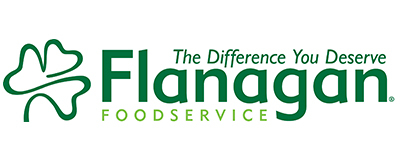
We collect basic website visitor information on this website and store it in cookies. We also utilize Google Analytics to track page view information to assist us in improving our website.

by Jane Auster
This post was written by Jane and the Brand Points Plus team. If you're not a member, this is an amazing, no-cost loyalty program. To learn more click here.
Flexible restaurant operators are converting from eat-in to takeout during the COVID-19 pandemic. And whether they're fine dining, QSR or casual eating establishments, they're finding it's not as hard as you may think to revamp an eat-in operation. Also, according to infectious disease specialist Isaac Bogoch, the risk of contracting the virus from takeout and delivery is "so extraordinarily small" – good news for consumers and restaurant operators alike.
Make ordering and payment a snap. Many diners, especially Millennials, are already conversant with online and app ordering. Make sure your web and app menu allows for easy ordering and that you're capable of receiving text message orders and app orders from mobile devices. Then add a pre-payment option to make the whole process seamless. Companies like cloud-based commerce platform Lightspeed POS Inc. have set up special resources during the crisis to help restaurants who are converting operations to takeout and delivery.
Change up your restaurant layout. Without the need to provide tables and chairs for traditional eat-in dining, you can easily convert that space into takeout/delivery work stations. Think assembly line in the way you organize your takeout operation.
Revisit your staffing. There's no doubt you will not need the same number of employees as a full-service restaurant requires. But you will want to retain as many as possible to keep you up and running professionally and prepare for a return to more normal operations. Now is the time to redeploy your talent. You'll still need cooks (short order especially), cleaners, order takers and payment processors, delivery staff, and quality control personnel. You may also need a person assigned specifically to answer customer questions about your menu, takeout and delivery options, payment, and so on.
Carefully consider your menu. Not everything on your regular menu will be suitable for takeout and delivery. A takeout menu is more a snapshot of your full offerings. Confine your takeout to top sellers (as long they're not too elaborate or time-consuming to prepare), dishes that will transport well in takeout and delivery, and entries that will still give you a good return on investment.
Use the right packaging for the job. No one likes to pick up or receive soggy, leaking, messy or unattractive food packages. Companies like W. Ralston, Novolex and Polar Pak feature packaging specifically for foodservice operations that include takeout and delivery, and also packaging that's size-appropriate. “The packaging a French fry requires for travel is different than a pasta dish. And packaging will also depend on the miles or time it needs to travel,” says John Veder, director of innovation - paper for Novolex North America. Also consider packaging that can be easily reheated without having to be transferred to other dishes.
“With takeout, the customer is in control of when that food is consumed,” says Veder. “For delivery, the customer is at home, waiting. Their expectation is that the food is ready to eat. Not soggy. Not cold.”
Make delivery easy. "Delivery was a growing market segment prior to COVID-19," says foodservice principal Jeff Dover of fsStrategy Inc. "Restaurants have been adjusting delivery menus to include products that hold well and working on takeout containers that hold the food well. Increasingly, they are looking for tamper proof containers. If a restaurant hasn't worked through this yet, they may want to think about it before going full delivery. If they don't normally do takeout or delivery, they will need to get the packaging."
If you're new to delivery, you may want to partner with an established foodservice delivery company like Uber Eats, DoorDash, Foodora, or Skip the Dishes. Uber Eats has announced that the company is waiving its normal delivery fees for customers who order from independent restaurants and allowing restaurants to receive payment daily instead of on a regular billing cycle in order to help their cash flow. Door Dash has said it will be not be collecting service fees for the first 30 days for a new restaurant client. Restaurants who partner with delivery services also benefit from the online exposure on food delivery sites.
Do it yourself? Some restaurants are choosing to do their own delivery by training their regular waitstaff to become delivery door-dashers. In the short term this is a great way to continue employing front-of-house staff. But don't forget to check your insurance to make sure your staff are covered for "other" employment within your operation.
What kind of vehicle will you need? Motorized, bike delivery, or via public transit?
What's your radius? How far are you willing to travel for your customers? During this difficult period, literally going the extra mile will make a huge difference and help retain loyalty.
How's your branding? What kind of branding will you use to stand out? The big food delivery companies are able to advertise themselves through their distinctive, logo-ed carry-on packaging. Like the big guys, your new visual identity as takeout and delivery food providers matters. Consider branding your takeout packaging with your company logo and tagline or marketing messages. Market and promote the service on your website as well.
Ramp up your social media. Never has your social media been more important. It's your direct conduit to customers, a way to let them know that you are still in business and you value their patronage and support. If you're adding takeout and delivery, you need to spread the word. Social media such as Instagram, Facebook and other community pages can let people know you are open and active. Don't be afraid of doing something different and a little crazy on your Instagram. Get personal, do a virtual meal in your restaurant and film it, sing an aria outside your restaurant and post to your Instagram.
You may also want to create an old-fashioned paper flyer with your takeout menu and have a staff member deliver it to your local area. Sometimes old school is the best school. The point is to communicate as often as you can with customers to keep them close. And don't forget to thank them. They want to help.
Get creative. Some clever restaurants are throwing in extras with customers' takeout and delivery orders. Have any logo-ed t-shirts on hand? Send one with each order. Do you make any branded food items for sale, such as jams? Add one to each order. A restaurant in Toronto is even offering to throw in a roll of toilet paper to food orders made through Uber Eats.

